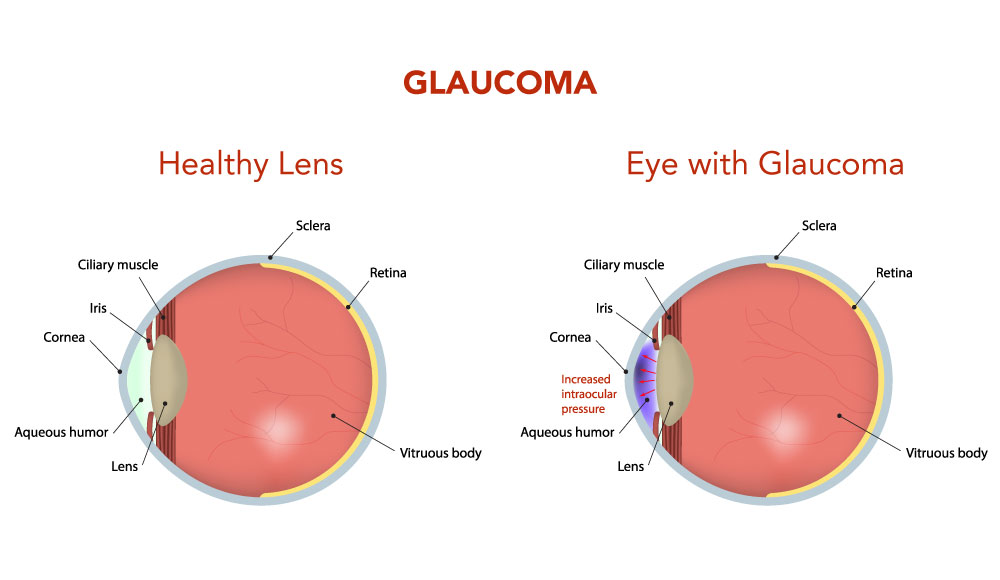Glaucoma is often caused by high pressure inside the eye. Trabeculectomy reduces the eye pressure by draining fluid from the eye. The surgery typically lasts up to 45 to 60 minutes.
Glaucoma Surgery
This surgery reduces pressure build-up inside the eye by draining any excess fluid.
Glaucoma Surgery

What is Trabeculectomy?
Trabeculectomy is a surgical operation which lowers the intraocular pressure inside the eye (IOP) in patients with glaucoma by making a small hole in the eye wall (sclera), covered by a thin trap-door in the sclera.
By draining the fluid inside the eye (known as aqueous humour) through this trap-door, the operation reduces the pressure on the optic nerve and prevents or slows further damage and further loss of vision in glaucoma. Control of the eye pressure with a trabeculectomy will not restore vision already lost from glaucoma.
The aqueous humour that drains through the trabeculectomy accumulates in a reservoir between the sclera and the surface layer of tissue that covers the eyeball (the conjunctiva) to form a small drainage bleb that is usually hidden under the upper eyelid.
What does the eye look like after the operation?
Initially the eye is red and swollen to a variable degree after surgery. The eyelid may also droop partially. This usually resolves over a period of weeks to months. The drainage bleb is not usually visible to the naked eye after the trabeculectomy operation. The bleb may, however, be seen if the patient looks in the mirror and raises the upper eyelid.
After surgery, most patients feel no sensation from the presence of the drainage bleb. Rarely, patients are aware of the drainage bleb. Should this occur, steps can be taken to make the bleb more comfortable; this is discussed further under complications.
Medication Prior to Surgery
Prior to undergoing surgery, patients are asked to continue all drops and tablets in accordance with their normal treatment regimen until the morning of the operation. Blood thinning medications should also be continued. Nevertheless, your doctor may ask you to stop taking blood thinning medication prior to surgery to ensure it is within the correct therapeutic range.
If patients opt to have the surgery performed under general anaesthesia, a pre-operative assessment of their general health will be carried out just before surgery. Underlying medical conditions including cardiac disease, uncontrolled high blood pressure and diabetes are addressed prior to scheduling of surgery.
Before Surgery: Use of Anaesthesia
Trabeculectomy surgery is often performed under local anaesthesia, though it may also be performed under general anaesthesia. Patients who have their surgery under local anaesthesia are awake during the operation but will have the option of requesting light sedation.
The eye is anaesthetised first with eye drops and then an injection of anaesthetic is administered around the eye. The anaesthetic injection itself may cause some mild discomfort; a slight sensation of pressure as the anaesthetic is delivered. The injection anaesthetises the eye, preventing not only pain but also excessive eye movement during surgery.
During surgery patients are covered by a sterile sheet, or drape, which keeps the operation site sterile and also prevents patients from seeing any of the surgery. Patients will be aware of the surgeon working around the eye, but should not feel pain.
In the event of any pain or discomfort, the patient may calmly raise a hand and the surgeon will stop the surgery and top-up the anaesthetic if needed. Patients may also hear the surgeon speaking to the scrub nurse and other members of the surgical team.
After Surgery: Post-operative Care
Patients are usually discharged home either the same day as the surgery. All patients need to be examined one day after surgery so a further visit to the clinic the following day is required for those having day case surgery.
The eye is normally padded after surgery and the eye pad is removed the following day. If the unoperated eye does not see well, then the operated eye will not be padded. Instead, a clear shield will be placed on the operated eye so that it is still possible to see after surgery.
Patients are advised to ask a friend or relative to accompany them home after surgery, especially patients who have poor sight in the unoperated eye or those who have had general anaesthesia.
What should I expect to feel during the post-operative period?
It is normal for the vision to be blurred and the eye to be uncomfortable after surgery. The period of blurring is variable. The vision may be particularly blurred for one to two weeks following surgery, and then start to improve. It can take two to three months for the eye to feel completely normal and the vision to stabilise completely.
The patient will also be asked to wear a shield at night for the first two weeks or so; this is to prevent any accidental harm to the operative site whilst sleeping.
Soreness in the eye after surgery is partly due to the surgery itself, and partly due to the sutures (or stitches). The sutures do not dissolve and are usually removed in the clinic two to three weeks after surgery (this takes two to three minutes in clinic with the eye anaesthetised using eye drops). The eye usually starts to feel more comfortable after the sutures have been removed.
Eye drops after surgery
Eye drops will be prescribed to use regularly after surgery. These start the day after surgery, after the post-operative examination. It is not usually necessary to use eye drops the first night after the surgery. Acetazolamide (Diamox) tablets or any glaucoma medication to the operated eye should also be stopped the night after surgery unless advised otherwise.
It is important that any eye drops for the unoperated eye are continued unless advised otherwise.
The post-operative eye drops will usually consist of an antibiotic and anti-inflammatory steroid. Patients are given a supply of post-operative eye drops on leaving the clinic; these should last one month. The post-operative eye drops will normally need to be taken for two to three months.
Patients are advised at each post-operative visit whether a change in the dosage of drops is required. The drops should not be stopped or the dosage changed without consulting the doctor.
Post-operative clinic visits
Patients are usually seen once weekly for the first four weeks, and may be seen more frequently if the eye pressure is either too high or too low.
Activity after surgery
It is important to avoid strenuous activity during the early post-operative period including swimming, jogging and contact sports.
It is permissible to watch television and read, as these will not harm the eye.
As patients will be monitored closely following surgery, it is recommended that they consult their surgeon before commencing strenuous activity. If the eye pressure is very low after surgery the surgeon may suggest refraining from all exertion and remaining sedentary until the pressure is restored.
When can I go back to work?
The duration of time off work/school will depend on a number of factors such as the nature of the patient’s employment, the state of the vision in the other eye and the pressure in the operated eye.
Typically someone working in an office environment would require two weeks off, if the post-operative course is smooth. Someone whose occupation involves heavy manual work or work in a dusty environment may require a month or more This can be discussed with your consultant.
Contact lens use after trabeculectomy surgery
It is usually possible to restart contact lens use around four weeks and sometimes sooner after trabeculectomy surgery.
Not everyone can continue to wear contact lenses after trabeculectomy surgery, so this is something to consider before having a trabeculectomy operation. If contact lens wear is essential, then other alternatives to trabeculectomy should be considered.
Whether or not contact lenses can be worn after surgery depends on the appearance and shape of the drainage bleb. The surgeon will usually be able to advise on this by six to eight weeks after surgery.
Flying after surgery
Although it is safe to fly after surgery, patients should bear in mind that their surgeon will wish to see them for a number of post-operative visits to ensure that the eye pressure is at the correct level.
When is the eye back to normal?
In most cases, it takes two to three months for the eye to feel completely normal and sometimes longer in more complicated cases. At this point a refraction (spectacle test) is usually required as the spectacle prescription may have changed slightly from the pre-surgery prescription.
Success Rates and Complications
Long-term studies suggest that most people will achieve a low eye pressure without the need for additional glaucoma medication after trabeculectomy surgery. In clinical trials, trabeculectomy has proven consistently more successful at lowering intraocular pressure than either medication or laser.
The success rate of trabeculectomy at controlling the pressure varies according to a number of risk factors including the type of glaucoma, previous surgery, ethnicity, age and other conditions.
In one study of trabeculectomy success, after 20 years almost 90 per cent were still successful. Just under two thirds of these required no glaucoma medication to control the pressure, whereas one third still required medication. In the author’s practice, roughly 10-12 per cent will require further surgery for uncontrolled pressure.
Uncommonly, a patient will develop a pressure that is too low, requiring further surgery to elevate the pressure.
Risks & Complications
Severe complications are rare and may happen either if the eye pressure drops very low or very quickly during the early post-operative period, or if the eye becomes infected. Very low eye pressure is the biggest risk in the early post-operative period. Although it is often painless, it may be associated with a dull aching feeling or a throbbing sensation within the operated eye.
Patients who notice severe blurring of vision, distortion or a fluctuating curtain in their visual field should attend the eye casualty department as soon as possible for further assessment. Very low pressure or a precipitous drop in pressure can result in bleeding at the back of the eye (choroidal haemorrhage). This is a very severe complication but rare. In order to ensure that this does not happen the surgeon will often suggest further intervention if the pressure becomes very low. Such intervention may consist of a return to the operating theatre to have the trap-door sutures tightened.
Sometimes the surgeon will inject a viscoelastic gel into the eye and wait to observe the result before deciding on further adjustment of the trap-door sutures, as the eye pressure will often stabilise by itself.
Sometimes a simple adjustment of medication is sufficient, in which case, neither of the above will be required.
The risk of serious infection or serious bleeding in the eye from trabeculectomy is rare.
Longer-term risks
The longer-term risks of trabeculectomy are infection, discomfort, cataract and change in glasses prescription. Low pressure occasionally develops in the longer term, but generally the risk of low pressure is highest in the early post-operative period rather than later.
Infection
While the risk of infection after surgery is rare, there is a very small on-going life-time risk that the drainage bleb might become infected.
If a patient who has had a trabeculectomy subsequently develops a red, sticky or painful eye, it is important they have their eye examined immediately by an ophthalmologist, as this may be a sign of an infection. While infection is rare, it may be very serious and can result in visual loss. The earlier any infection is treated, the better the outcome for the eye.
Discomfort
The drainage bleb may become large. Occasionally this may extend below the eyelid or cause the eyelid to be raised or droopy.
A large drainage bleb may cause interference with the tear film on the eye surface, and can create a feeling of discomfort or drying of the eye. This occurs in about ten per cent of patients and is usually treatable with artificial tear drops. Occasionally, the discomfort is more severe and requires surgery to make the drainage bleb smaller.
Cataract
In patients who have not had cataract surgery, there is a risk that trabeculectomy may worsen an existing cataract.
Raised eye pressure and glaucoma medications have been shown to cause cataract in population studies.
Astigmatism and other changes in glasses prescription
Most patients require a small change in their glasses prescription after trabeculectomy. Patients should refrain from changing their glasses until at least three months after the surgery and only once the eye pressure has stabilised.
It is advisable to check with the doctor before changing glasses. Rarely, a patient who does not require glasses before surgery develops a need for glasses after surgery.



